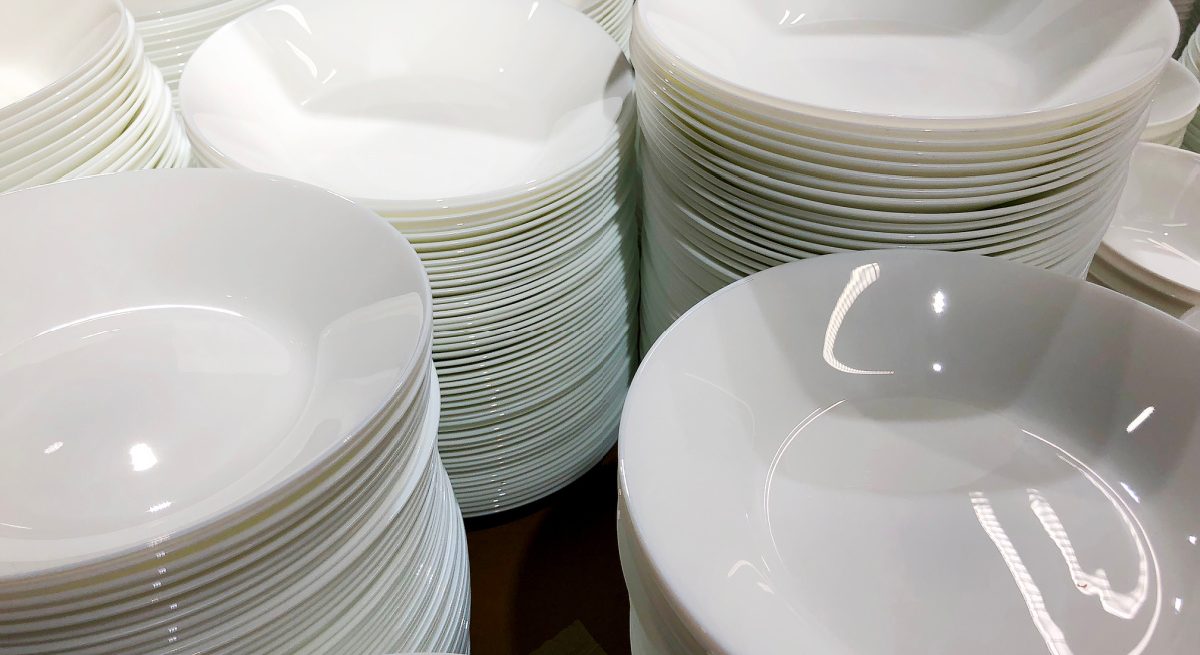Avoiding Warewashing Woes Ensures a Profitable Kitchen
4 Min Read By John Goetz
The best restaurants are those that keep back-of-house processes running smoothly to ensure a great front-of-house experience for guests. Expert food preparation results in appealing and delicious dishes, employee training reduces errors that can increase wait times and proper warewashing keeps plates, glasses and utensils spotless.
In an increasingly digital world, one mistake can be costly. A 2021 OpenTable survey of more than 21,000 diners revealed that 52 percent of diners find the latest information about restaurants online and 42 percent learn from word of mouth. Additionally, a 2020 survey conducted by Datassentials found that consumers rank “clean and sanitary” ahead of traditional decision-factors like taste, value and location when choosing a restaurant.
There’s more pressure than ever for restaurants to live up to guest expectations, secure rave reviews and drive repeat business. Thankfully, technology is pushing the industry forward, and improving everything from reservations to ordering to dishwashing.
Washing Away Profits
Commercial dishwashers use between two and seven gallons of water per minute. They also consume energy and chemical. Proper machine use and maintenance helps keep rewash rates low, which saves restaurants chemical, water, energy and time. This translates to cost savings.
Keeping equipment functioning as intended also reduces the risk of damage that results in expensive repairs. And most importantly, when machines run at the proper temperature with accurate chemical doses, it ensures food safety compliance and helps operations achieve the necessary level of cleanliness that today’s discerning diners expect.
Dishwashing disasters can have a negative impact on business, which is why managers and employees need to understand how to:
- Delime dish machines – Over time, hard water can cause lime buildup inside the machine and result in deposits on dishes. Deliming reduces the risk of clogging and malfunctioning of essential components. High water hardness levels, washing at higher temperatures and washing more frequently will increase the need for deliming.
- Change tank water – As equipment completes cycle after cycle, the tank water becomes dirtier and less effective as a cleaning agent. To ensure dishes are emerging clean, it’s typically recommended to replace tank water every 20 wash cycles or between shifts to ensure that you’re not starting the meal-service with tank water that is left over from the previous one.
- Change squeeze tubes and empty chemical containers – Employees should replace squeeze tubes every three to six months and frequently refill empty chemical containers. This helps to maintain consistent chemical delivery and avoid lapses in cleanliness.
A Window into Warewashing
Implementing the latest tools of the trade can simplify tasks for employees and help restaurants wow diners. Connected warewashing dispensers that leverage the Internet of Things (IoT) support cleanliness, food safety compliance, sustainability and the bottom line. These smart solutions enable restaurant managers to drive improvements by giving them a window into the warewashing process.
So, how do these dispensers function?
Chemical dispensers dose a precise amount of solution, such as rinse aid or detergent, so that dishes emerge clean upon each wash. IoT-enabled models take the warewashing process a step further by providing insightful data on productivity (the number of racks cleaned), chemical usage and related costs. Connected solutions also assist kitchens in avoiding larger issues through alarms that remind staff when it’s time to conduct maintenance. Those with temperature sensing capabilities inside the wash tank and rinse lines keep tabs on temperature levels and any shifts that may occur.
Managers can consult the checklist below when reviewing warewashing dispensers to ensure they will meet their operation’s needs:
- Compatible with numerous products – Chemical dispensers for warewashing should be capable of dosing both solid and liquid chemical formulations to achieve the cleanest dishes, utensils and glassware.
- Certified for its performance – Credentials demonstrate a product’s safety and efficacy. For added assurance, check whether the dispenser is certified by various global standards like Electrical Testing Laboratories (ETL), Canadian Standards Association (CSA) and Conformitè Europëenne (CE).
- Well-suited for different types of equipment – Make sure the dispenser can be installed on door, conveyer and flight-style machines, including both high- and low-temperature equipment. To further simplify installation, confirm if the dispenser features pre-wired power, signal and conductivity cabling to save time and reduce training.
- Offers time-based reporting – Having visibility into the inner workings of the warewashing process in can allow restaurants to quickly course correct and better understand where inefficiencies may be occurring. Being able to easily access an app to view this information allows managers to see what’s happening and make adjustments before they turn into a bigger problem.
- Ensures data security – The dispenser should ensure secure data transmission via a trusted platform and prevent unauthorized users from accessing and making changes to the dispenser.
Cleaning up the Dishwashing Process
What happens behind the doors of a commercial kitchen can have a big impact on the guest experience. Warewashing is one such process that needs to operate seamlessly in order to keep restaurants productive, profitable, and in compliance. When restaurant managers and employees understand how to maintain dishwashing equipment and the value that connected solutions bring, they will be better equipped to uphold customer satisfaction and their business’ reputation in an increasingly challenging market.


